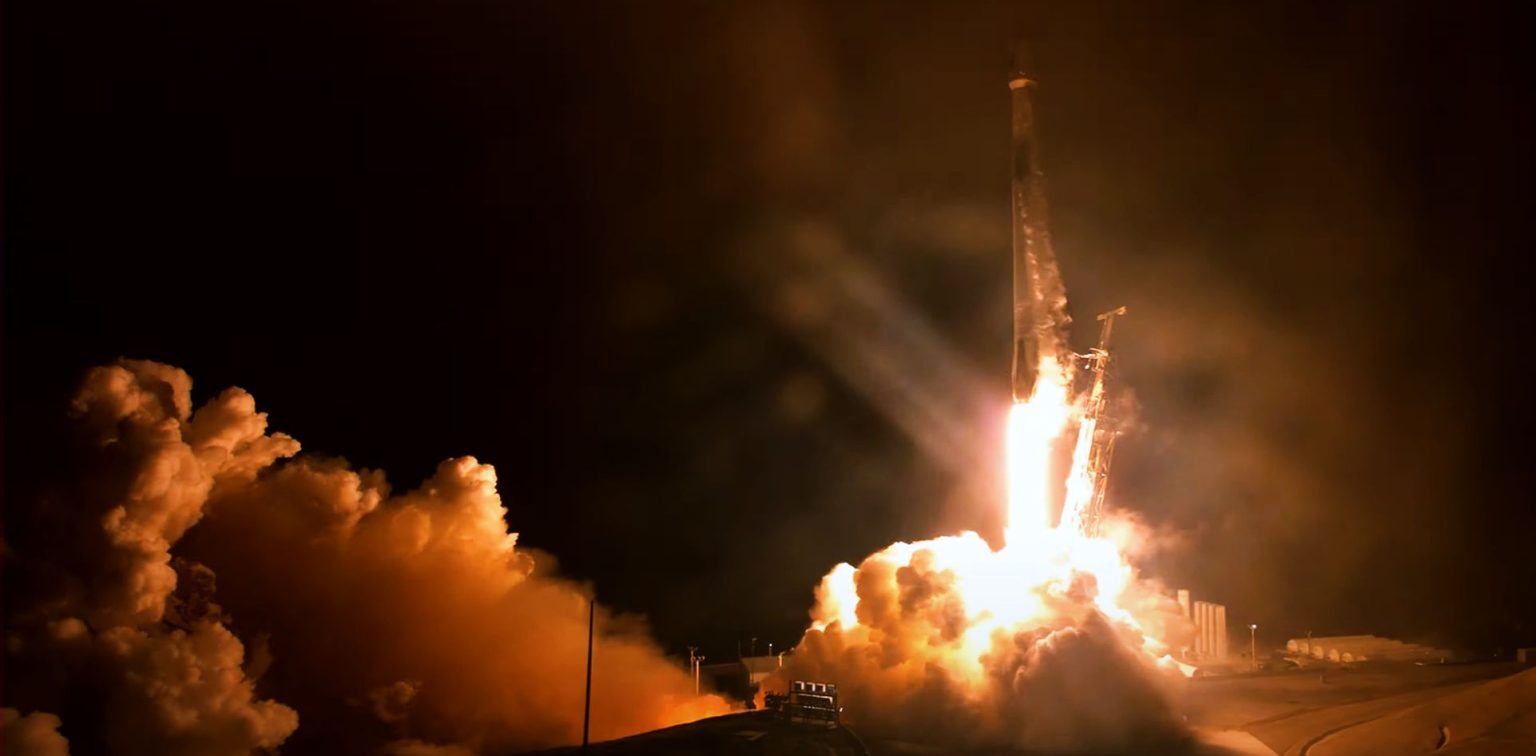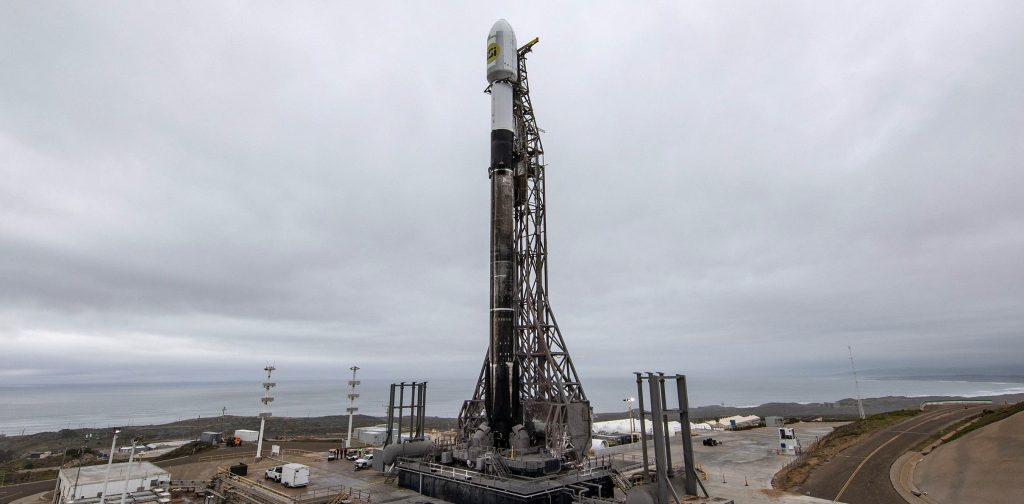31.12.2022

SpaceX has tied a 42-year-old record with its 61st and final Falcon rocket launch of 2022.
Also marking the latest in a calendar year SpaceX has launched a rocket, a Falcon 9 lifted off from the company’s Vandenberg Space Force Base (VSFB) SLC-4E pad at 11:38 pm PST, Thursday, December 29th (7:38 UTC 30 Dec) carrying a tiny Earth observation satellite for Israeli company ImageSat International. Built by Israeli Aircraft Industries, the EROS C3 space telescope is the third of its kind and likely weighed just 400 kilograms (~900 lb) at liftoff, utilizing less than 1/40th of Falcon 9’s available performance in a reusable configuration.
The extremely light payload precluded the need for SpaceX to send drone ship Of Course I Still Love You (OCISLY) several hundred kilometers into the Pacific Ocean, likely saving several hundred thousand dollars. Instead, Falcon 9 booster B1061 lifted off for the 11th time, carried EROS C3 and an expendable Falcon 9 upper stage most of the way into space, and then boosted back towards the California coast to land less than a quarter-mile from SLC-4E.
EROS C3 was SpaceX’s 170th consecutively successful Falcon launch, 160th successful landing, and 132nd launch with a reused booster. But more importantly, the mission was also SpaceX’s 61st successful Falcon launch this year, tying a record that hasn’t been touched since 1980.

In 1980, after two decades of gradual buildup, the Soviet Union managed to launch variants of its R-7 workhorse rocket 64 times in one calendar year. 61 of those launches were successful, setting a record that has been left unchallenged for decades. Only the R-7 family ever posed a threat to its own record, managing 55 successful launches in 1988, but its launch cadence – heavily driven by disposable Cold War reconnaissance satellites – plummeted with the fall of the Soviet Union and has never recovered.
Only in 2022, almost half a century later, has the R-7 family finally found a worthy challenger for its annual launch cadence record. That the challenger is a private company that had to legally force its way into parts of the US launch industry is arguably one of the deepest possible condemnations of the relative stagnancy US space launch capabilities experienced after the Apollo Program. But it also makes SpaceX’s achievement – accomplished with rockets that did not exist before the late 2000s – even more impressive.
Similar to the Soviet peak, an extraordinary period during which the R-7 family successfully launched 1181 times in 22 years, there is one main driving force behind the recent surge in SpaceX’s launch cadence. But instead of the Cold War, the force behind Falcon’s rise is SpaceX’s own constellation of Starlink internet satellites. Since operational launches began in November 2019, Starlink satellites were the primary payload on 66 of the last 125 Falcon launches. In 2022 alone, SpaceX launched 34 Starlink missions.
In 2021, SpaceX completed 31 Falcon 9 launches, 17 of which were Starlink missions. In 2022, SpaceX’s 61 Falcon launches nearly doubled that peak year over year. For a few reasons, that annual doubling is unlikely to repeat itself anytime soon, if ever, but CEO Elon Musk has still issued SpaceX a target of 100 launches in 2023 – a 64% increase year-over-year.
Even that target will be a major challenge, but the EROS C3 mission holds a clue about one of the ways SpaceX can squeeze more out of its existing rockets and launch pads without needing to smash records. SpaceX’s busiest pad, Cape Canaveral’s LC-40, managed nine launches in the last three months of 2022. Its Kennedy Space Center LC-39A pad managed 18 launches over the year. Finally, EROS C3 was SLC-4E’s 13th launch of 2022.
While the California pad came in last, it does not have the same cadence constraints (Dragon and Falcon Heavy missions) as Pad 39A. And less than 12 days ago, SpaceX’s West Coast SLC-4E helped launch NASA and France’s SWOT water observation satellite. Having repeatedly demonstrated the ability to launch two Falcon 9 rockets in less than 12 days, SLC-4E has the potential to carry much more weight in the future. If SpaceX can improve the pad’s ease of use, it could feasibly support 20-25 launches per year, and potentially 30+ with further optimization.
With SLC-4E operating at a cadence of 25 launches per year and LC-40 and LC-39A both operating as-is, SpaceX could launch approximately 80 Falcon rockets in 2023. Ultimately, if SpaceX can maintain the Falcon family’s unprecedented streak of successful launches and improve the uptime of its existing pads, it’s hard to see the R-7 family’s annual cadence record making it to 2024. SpaceX also has a clear (but steep) path to 90+ Falcon launches next year, though simply mirroring its 2022 performance would still be an extraordinary feat.
